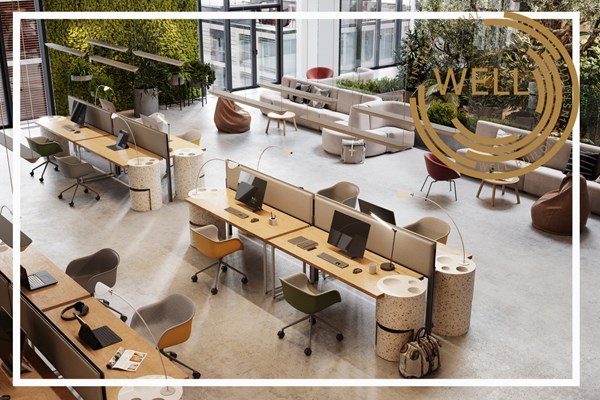
Many of us are spending a lot more time indoors than we realize. According to an EPA report, “Americans, on average, spend approximately 90 percent of their time indoors.” This is especially true in urban areas.
Technology is steadily providing more ways to stay connected and productive without leaving our desks to venture outdoors. For office buildings, this increased immobility by hundreds (or thousands) of occupants is raising new concerns regarding the overall workplace environment's healthiness. The advent of a worldwide pandemic has only heightened concerns about renovating existing buildings and designing new buildings with a focus on maximizing and advancing human health and well-being. A new certification, called WELL, is available for those buildings meeting stringent guidelines in areas such as indoor air quality, water quality, and thermal comfort.
The Genesis of WELL Certification
The WELL certification movement sprang from a 2013 New York Times article that described how a real estate developer was building some Manhattan condos, fusing green technology (LEED) with health-centric all-about-me amenities and labeled it as WELL certified. These included such standards as the purest air and water, the most intense soundproofing, a circadian lighting system, posture-supportive flooring, and microbial surface coating that destroys bacteria in kitchens and bathrooms. That same year, the WELL certification was formally established by the Green Business Certification Incorporation (GBCI). This company already administers the LEED certification program. While LEED focuses on energy efficiency and reduced environmental impact, WELL focuses on improving health and well-being.
WELL Certification Considers Seven Areas
The WELL certification process requires a building to pass muster in seven areas associated with human well-being. These include:
- air - requirements are established for the building to promote clean air and reduce or minimize the sources of indoor air pollution.
- water - promotion of safe and clean water through the implementation of proper filtration techniques and regular testing.
- nourishment - availability of fresh and wholesome food, limiting highly-processed ingredients and supporting mindful eating.
- light - illumination guidelines that minimize disruption to the body’s circadian system, enhance productivity, and support good sleep quality.
- fitness - promotion of integration of physical activity and discouraging of sedentary behavior.
- comfort - design of ergonomic, thermal, acoustic, and olfactory comfort to optimize the indoor working environment.
- mind - optimized cognitive and emotional health through design, technology, and treatment strategies.
How to Become WELL Certified
Getting WELL certified requires the submission of project documentation and an onsite audit. The WELL certification is designed for buildings at any stage - design, construction, normal operation, or renovation. A defined score, based on a 110 point system, is determined for each of the seven categories mentioned above. With a passing score in each category required, the building will then receive a Silver, Gold, or Platinum certification. Certification for new and existing buildings or interiors is valid for three years. Re-certification is then required.
The Benefits of WELL Certified Buildings
Developers realize that the expense and time involved in obtaining WELL certification for a building ultimately add value, making the property more attractive in the marketplace.
- Corporate Tenants are attracted by the benefits of a WELL certified building.
Corporations know that having a healthy building - one branded as WELL certified - can be incredibly important financially. Productivity can be improved through better air quality, controlling temperature, and reducing noise. A WELL building can help to mitigate rising health costs and reduce absenteeism. Recruiting and retention are easier, as applicants are attracted to the idea of working in optimized lighting, air and water purification, and an ergonomically-friendly environment.
- Investors and owners see WELL properties as smart investments
Investors or building owners know that a healthy, customer-centric building can attract premier tenants. That often translates into higher rents and profits in lease agreements. Increasingly, large corporations like Deloitte, Citigroup, Microsoft, and Wells Fargo bank are including healthier space requirements when searching for new tenancy spaces. Scott Muldavin, President of real estate consulting firm the Muldavin Company, said it best - “If you want to attract premier tenants to drive your building, the WELL building standard is a really good thing”.
In the final analysis, a building designed to meet the WELL standard is attractive on many levels. Developers and investors know it represents a prestigious certification that can command higher rents. Corporate occupants appreciate the financial savings, increased productivity, and the employee-caring image they offer. Employees are enticed by the opportunity to work in an environment maximized for their good health.
Building owners would do well to become WELL-certified.